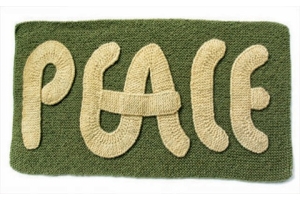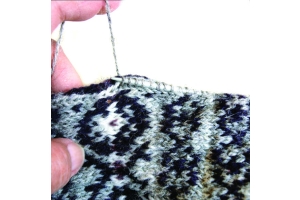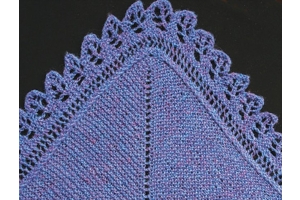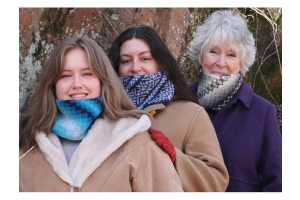Blog #6 Meg Swansen on Two Color Knitting
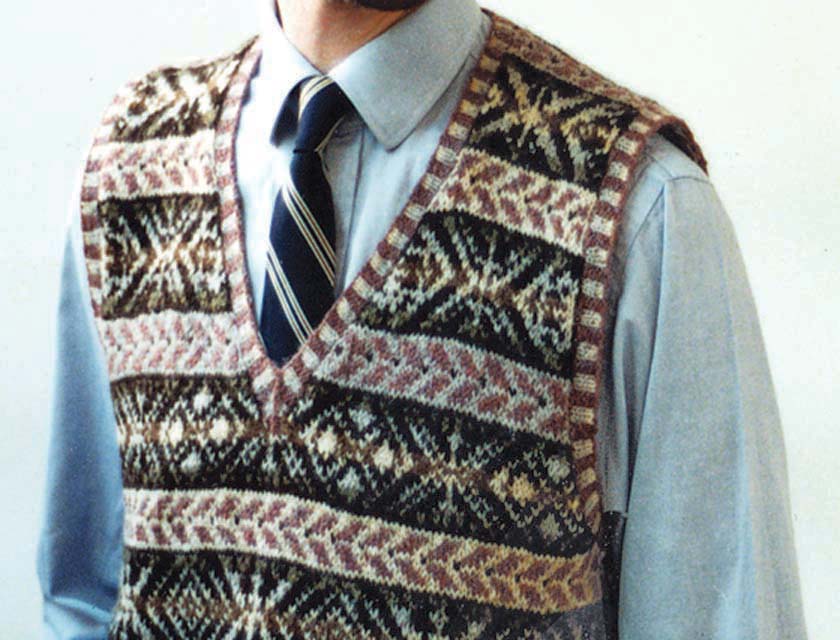
My mother, Elizabeth Zimmermann, had taught me to knit, holding the working wool over my left index finger (commonly called ‘continental’ knitting). When I became intrigued by color-patterns, mum showed me how to hold the second color in my right hand (‘American’, or ‘British’ style).
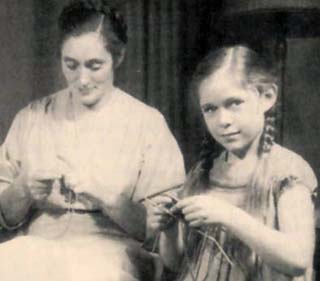
I always picked the shade that had the most stitches for my familiar and clever left hand, and the second color went to my awkward right hand. Gradually, my right hand began to figure it out, and I motored along happily in this mode for over a decade, producing a more or less matching gauge with each hand. I still recommend this method to new color-pattern-knitters: both colors are poised and ready to be knitted (no putting-down one color and picking-up the other), and you can keep one color on each side of you as you work, to prevent them from getting tangled.
During the long period when American knitting books were very sparse, my mother imported a number of titles from overseas. She came across some books during her travels abroad, and others were recommended by her customers (a mode I still depend upon... there are so many outstanding knitting books being published, I value the recommendations from our subscribers).
One day, my mother’s order for a Swedish book arrived: Binge - en halländsk sticktradition by Britta Johansson and Kersti Nilsson.
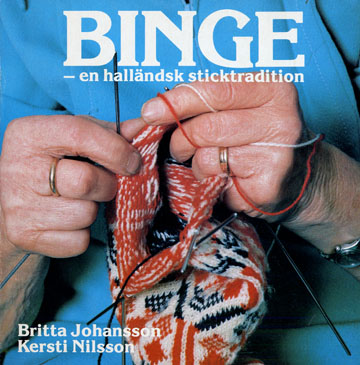
On the cover was a photograph of a woman knitting with both colors over her left forefinger. I immediately began to experiment. But even dedicated practice did not enable me to control the tension of the unworked color over a 3 or 5 stitch carry. I doggedly kept at it - and one day, while I was not paying particular attention, my left hand came up with a solution on it’s own: carry the second color over my left middle finger. Aha. It was kept out of the way until needed, and had its own tension control. Now - nearly 50 years later - I have heard of 3 or 4 other knitters who use this same style.
At present, I am engaged upon the task of reproducing a nearly 100-year old sweater, directly from Fair Isle, which had belonged to my grandfather. And, since I am often asked to describe my manner of two-color knitting, Cully took this video of me at work so you can see what I am talking about.
Am going back and forth. Should I knit from under on the purl side? Seems to want to do that. My tension is way better than trying 1 continental 1 throw. Thanks!
In 90% (and I might even dare to say 99%) of true Fair Isle charts, you will be hard pressed to find any long carries of the second color. That is one of the particular traits that defines authentic Fair Isle motifs -- along with never using more that 2 color per round.
If you DO find yourself seduced by a motif with a very long carry, 'Trap' the carried color in the middle. There are several ways to do this without interrupting the flow of your knitting.

